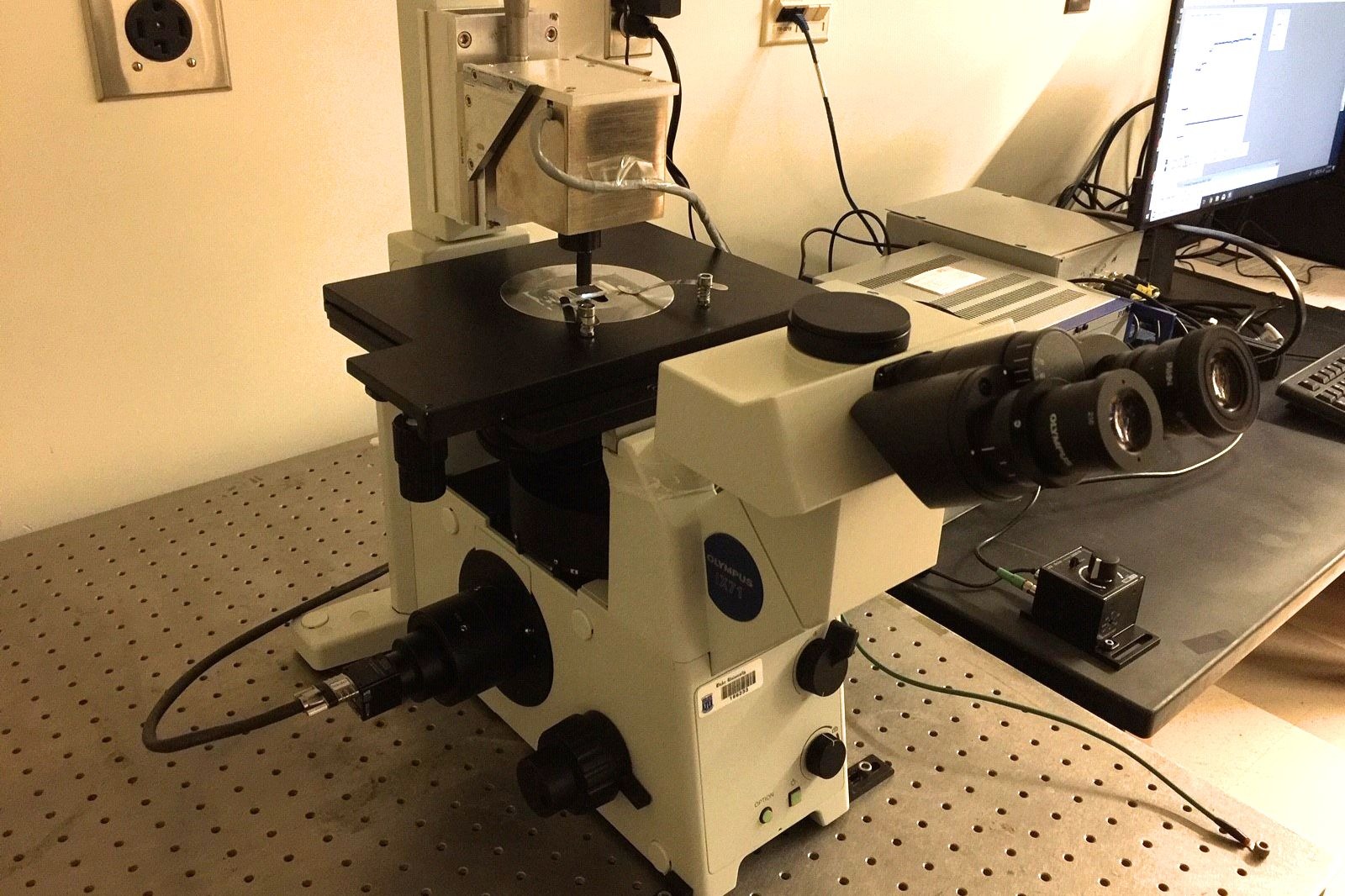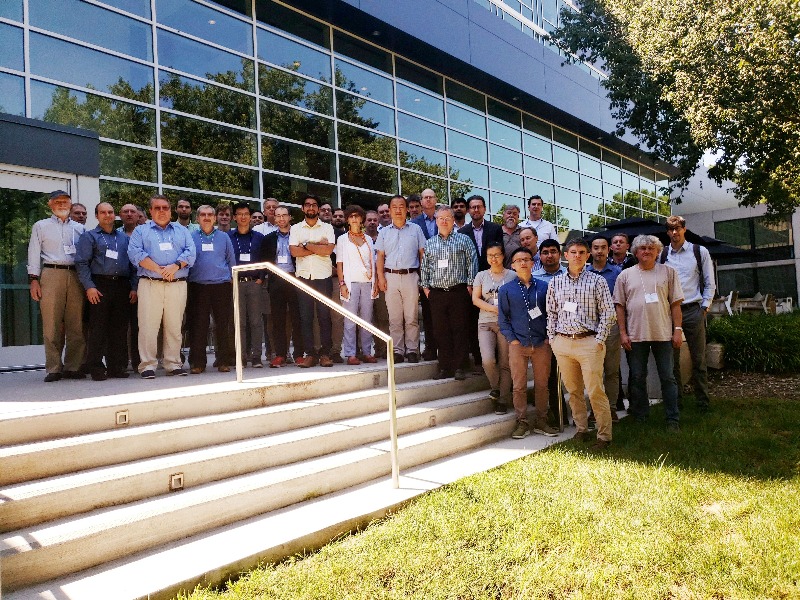Exploring Tiny Forces with Single Molecule Force Spectroscopy
Stretching molecules and pulling them apart reveals volumes about the way they function

In terms of space organization, DNA has powers rivaling Marie Kondo. A strand of DNA that is two meters long intricately folds itself into a cell nucleus only 10 microns across. (One of the hairs on your head has a diameter of 100 microns, and you can’t see anything smaller than that without a microscope.) Everything that needs to happen biochemically for the DNA to function hinges upon the precise unpacking and unwinding of its strands from that tiny space.
In terms of space organization, DNA has powers rivaling Marie Kondo.
But the study of DNA and other complex molecules often focuses not on their mechanical properties but on their chemical processes, noted Duke mechanical engineering and materials science professor Piotr Marszalek. While biochemical research has led to breakthrough applications like cloning, gene therapy and gene expression profiling, Marszalek said the intense focus on the single area has sometimes overshadowed the importance of mechanics in understanding the relationship between molecular structure and function.

Marszalek belongs to a community of researchers using single molecule force spectroscopy (SMFS) to study molecular structure, and the forces that stabilize these structures. Currently, there are three main approaches to SMFS: atomic force microscopy (AFM), which scans the surface of a molecule with a probe the size of a few atoms and is able to mechanically stretch these molecules; optical tweezers, which attract particles via focused lasers (and which earned their inventor, Arthur Ashkin, a Nobel Prize in physics); and magnetic tweezers, whose draw is so powerful that Marszalek warned me against handling them, for fear that my skin would be pinched between the magnetic cylinders and I would find them impossible to pry apart.
Each approach enables researchers to capture a single molecule—like DNA, or a bit of muscle or other protein—and slowly stretch it to observe what happens.
It doesn’t just snap in half, as you might expect.
Polypeptide chains are folded locally, Marszalek explained, in a way that forms small globules. “When you initially stretch a protein, you make a straight structure,” he said. “But when you pull further, everything begins to unwind. You can pull and pull without breaking, and in extreme cases a domain may unravel and offer extra length to protect itself.”
“When you initially stretch a protein, you make a straight structure. But when you pull further, everything begins to unwind. You can pull and pull without breaking, and in extreme cases a domain may unravel and offer extra length to protect itself.”
Piotr Marszalek, Duke Mechanical Engineering and Materials Science
Marszalek emphasized that this is not news—in May 1997, three papers on this topic were published almost simultaneously, one in Nature (Robert Simmons’s team used optical tweezers) and two in Science (Carlos Bustamante’s team also used optical tweezers, while Herman Gaub’s team used AFM). But those discoveries taught researchers much about how muscle is built, and reinforce the importance of understanding mechanics at the smallest scale.
Marszalek currently works to understand how molecules recover their shapes and function once the tension exerted upon them is relaxed. Take firefly luciferase—when correctly folded, this protein bioluminesces. When it loses its structure, it becomes a simple polymer, incapable of producing light. Other proteins, at the same point of collapse, benefit from the assistance of “chaperone enzymes” that aid in the recovery of their original shape. How they do it, exactly, is unclear, and learning more about that mechanism could give insight into how our bodies heal after physical stress.
Some of Marszalek’s colleagues are working out the mechanics of bacterial infections—how bacteria like staph are able to detect receptor proteins in cells and latch onto them so tenaciously that the bloodstream is unable to wash them away. The strength of that bond was successfully measured in 2017 using AFM, and discovering how to dissolve the bonds could aid in the fight against such deadly infections.
In the end of the summer in 2019, the National Science Foundation funded a SMFS workshop that Marszalek organized, alongside the University of Texas Medical Branch’s Andres F. Oberhauser. Held at Duke, the workshop brought together the luminaries who pioneered SMFS techniques decades ago with junior researchers focusing on future prospects for force spectroscopy. The intense agenda of sessions and roundtables lasted well into the evening hours each day, as participants covered the major accomplishments enabled by each technique, proposed future directions, and mulled over roadblocks that are impeding further progress.
It was also, as Marszalek had hoped, a swap meet for tools and ideas. Researchers at the University of Colorado-Boulder offered up molecules that can be used as “handles” to pull other molecules apart; a researcher from Johns Hopkins demonstrated how laser tweezers can be used to capture freshly synthesized proteins. Marszalek himself walked away with a shiny new collaboration with the University of Milwaukee, whose physicists have deep expertise with magnetic tweezers.
“Single molecule force spectroscopy has clearly come of age and produced many seminal discoveries within mechanobiology and mechanochemistry fields,” said Marszalek. “The excitement about SMFS approaches is steadily increasing, but there are challenges to be solved, particularly when it comes to exploiting SMFS to study mechanical properties and forces inside living cells. As researchers develop clever approaches to achieve that goal, this subject alone could be a theme of another exciting symposium.”
